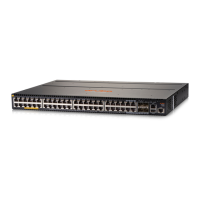If you happen to use a correctly wired crossover cable, though, the switch will still be able to
automatically detect the MDI/MDI-X operation and link correctly to the connected device.
Other Wiring Rules:
• All twisted-pair wires used for 10 Mbps, and 100 Mbps operation must be twisted through
the entire length of the cable. The wiring sequence must conform to EIA/TIA 568-B (not
USOC). See “Pin Assignments” later in this appendix for a listing of the signals used on each
pin.
• For 1000Base-T connections, all four pairs of wires in the cable must be available for data
transmission. See Note on 1000BASE-T Cable Requirements for more information on
1000Base-T cabling.
• For 10 Mbps connections to the ports, you can use Category 3, 4, or 5 unshielded twisted-pair
cable, as supported by the IEEE 802.3 Type 10Base-T standard.
• For 100 Mbps connections to the ports, use 100-ohm Category 5 UTP or STP cable only,
as supported by the IEEE 802.3u Type 100Base-TX standard.
• For 1000 Mbps connections, 100-ohm Category 5e or better cabling is recommended.
Straight-Through Twisted-Pair Cable for 10 Mbps or 100 Mbps Network Connections
Because of the Aruba Auto-MDIX operation of the 10/100 ports on the switch, for all network
connections, to PCs, servers or other end nodes, or to hubs or other switches, you can use
straight-through cables.
If any of these ports are given a fixed configuration, for example 100 Mbps/Full Duplex, the ports
operate as MDI-X ports, and straight-through cables must be then used for connections to PC
NICs and other MDI ports.
Cable Diagram
90 Cabling and Technology Information

